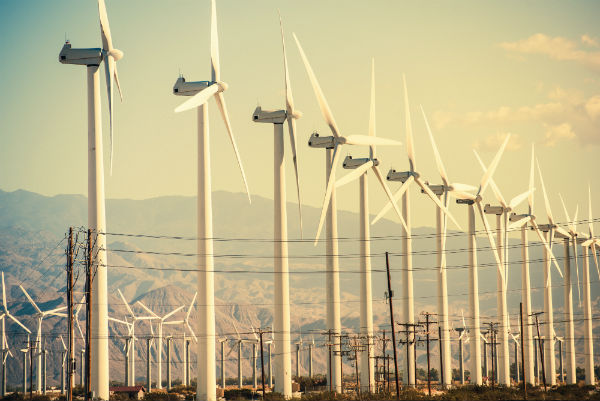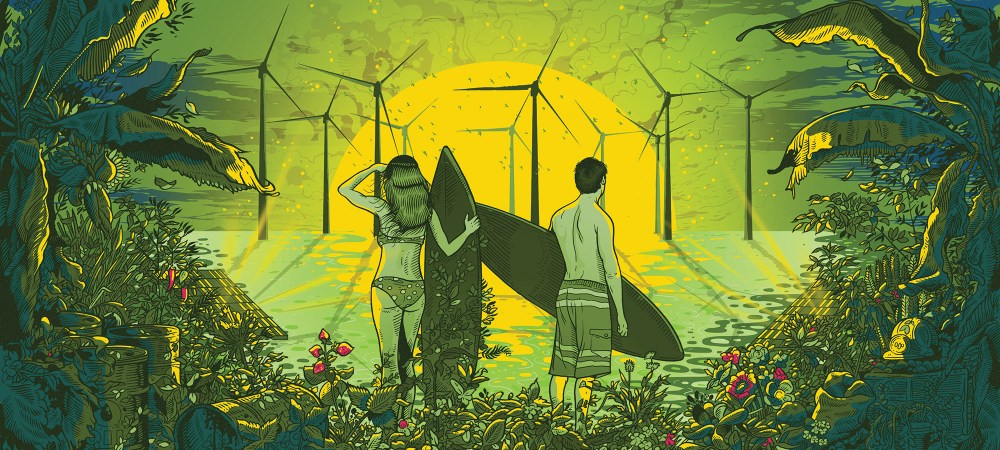

The Super Bowl seems superlatively excessive in every way. We eat 1.33 billion chicken wings. We chug 325 million gallons of beer. One might reasonably assume that we guzzle up electricity at equally whopping rates during the big, flashy event.
Except… we don’t. Not really.
Super Bowl Sunday is about watching football, yes, but it’s mostly about collective watching. The reason roughly a third of the country tunes in isn’t because millions more people suddenly care about the sport. It’s because it’s a shared cultural experience. We show up in droves to bars and parties because everyone is doing it together. And that’s why food numbers are so staggering—we sit and eat and drink, and goodness knows it’s easier to swallow twice as much food as you normally would when you’re parked in front of the television all night.
But the one thing we don’t do is consume more power. Why? Because we’re all watching communal TVs. It’s the car pooling of sports events. Analyses of energy consumption show that while we do use up a bit more energy than average before the big game, we usually drop below the norm while the Super Bowl is on (save for spikes at commercial breaks). We’re not getting up to open the fridge much. We’re not cooking. We’re not working on our laptops and checking our phones while we watch. We’re just sitting and staring the same energy-efficient television as 10 other people.
You could argue that we expend energy driving to our friends’ houses or to bars. We stock our fridges with extra food, which takes fuel to create. We drive to the grocery store for the fourth time that weekend because we forgot the Frank’s RedHot again. But that’s just a drop in the bucket.
And as for the stadium itself, well, that’s a massive energy guzzler.
U.S. Bank Stadium, where Super Bowl LII is happening (you’re welcome, non-football fans), isn’t keen on handing out information about their energy consumption, despite the fact that they’re LEED certified as a green, energy-saving building. All we could find is their EUI, or energy use intensity, which is a measure of efficiency in large structures. Based on their stated EUI of 92 kBTU/sqft*year (kilo British Thermal Units per square foot in one year), we can roughly guess-timate that in the five-ish hours the stadium will be filled with people, it will consume somewhere in the realm of 43,289,613 kilowatt-hours (kWh).
Compared to that, the energy consumed by all our televisions is tiny—probably around 83 kWh, and that’s assuming all 111-ish million people tuning in have their own TVs. The grand total amount of power, 43,289,696 kWh, could run over 4,021 houses for a year.
But here’s the thing: U.S. Bank Stadium consumes that monolithic quantity of energy a lot of the time. It’s not just home to this one particular Super Bowl, obviously, and it’s not even just home to the Minnesota Vikings. The Vikings actually pay $8.755 million in rent to the stadium every year. When there’s no football happening, the arena can be rearranged to hold baseball games, concerts, and all manner of other sporting events, so the lights and A/C are on for most of the year.
The shiny new stadium also happens to have a top-of-the-line LED lighting system that’s about 75 percent more efficient than traditional metal halide bulbs, so it’s possible that most of those kilowatts are cooling the place down. The principal architect on the stadium has said that the building is mostly in cooling mode—yes, sometimes even in the midst of a Minnesota winter. Packing more than 66,000 bodies into an enclosed space makes things heat up pretty quick.
They’re not even wasting energy waiting for lights to warm up. Metal halide lamps had to be turned on about 15 minutes before you’d need full brightness. This is because the lamps operate by vaporizing mixtures of metal halides (a particular kind of element) into plasma, so you need them to reach insanely high temperatures in order to achieve maximum vaporization.
This is why there used to be about a 15 minute wait time between the end of the halftime show and the start of the second half of the Super Bowl—we all had to wait for the lamps to warm back up.
With LED lights, you can just turn everything off and on as much as you want, which—according to the the Chief Technology Officer of the lighting company that installed the U.S. Bank system—actually grants us all about 12 more minutes of halftime show entertainment.
You can probably also thank them for Left Shark, who performed his awkward dance under the same lighting system at Super Bowl XLIX and consequently got a few more precious moments to imprint himself on all our brains. Finally, energy efficiency being put to good use.















